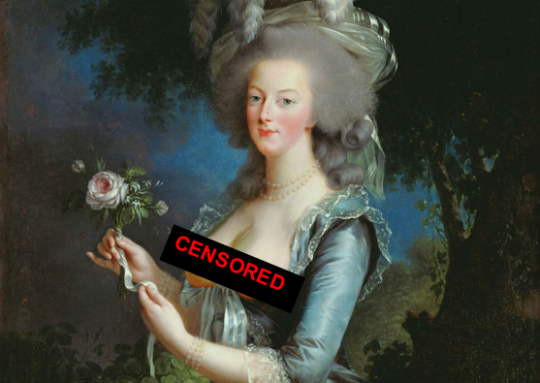
February 2016 marks the opening of Vigee Le Brun: Woman Artist in Revolutionary France at the Metropolitan Museum of Art. This is the first retrospective for Elisabeth Louise Vigee Le Brun, best known as Marie Antoinette’s favorite portrait painter.
In a life that spanned 86 years, several revolutions and most of the glittering capitals of Europe, Vigee Le Brun knew everyone…and we mean everyone: From Catherine the Great, who allegedly died having sex with a horse; to Lord Byron, who supposedly had sex with his own sister; to Benjamin Franklin, who had sex with pretty much everything; Vigee Le Brun knew them all, and painted most. Her sensational memoirs read like a Jackie Collins novel in petticoats, so we’ve taken the liberty of spicing up your museum-going experience with ten juicy tidbits the brochure left out.
1. Marie Antoinette’s girl squad
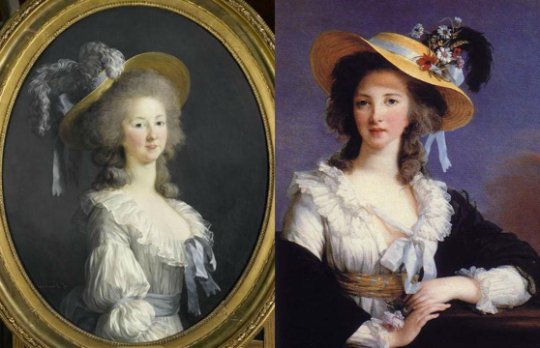
The Princess de Lamballe (left), and the Duchess de Polignac (right) by Vigee Le Brun, in Versailles, France.
Long before Taylor Swift, Marie Antoinette had the original girl squad.

Vigee Le Brun painted both of the Queen’s best girlfriends, the Princess de Lamballe and the Duchess de Polignac. The two women couldn’t have been more different, more frenemies than friends. Lamballe had modest looks and a reputation for chastity. To quote Clueless, Vigee Le Brun thought she was “a full-on Monet,” not really pretty, but appearing so at a distance. Polignac had the face of angel, often compared to Raphael’s Madonnas, but she was anything but virginal. She was accused of being Marie Antoinette’s lesbian lover, or alternately her pimp, facilitating the Queen’s affair with Count Axel von Fersen when she wasn’t busy having lesbian sex with her. Lamballe was considered too virtuous and dimwitted for such intrigues, but secretly conspired against Polignac, her rival for the Queen’s favor.
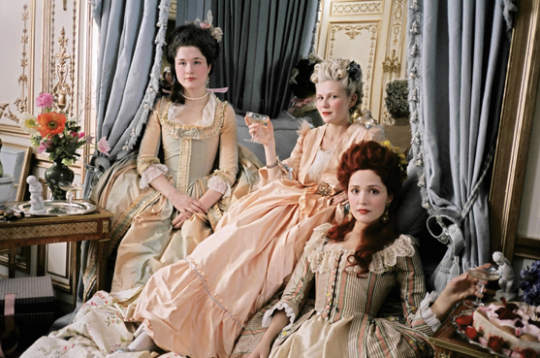
Mary Nighy as Lamballe, Kirsten Dunst as Antoinette, and Rose Byrne as Polignac: the original girl squad in Sofia Coppola’s Marie Antoinette (2006).
Neither woman fared well in the French Revolution. Lamballe was gang raped and torn to pieces by an angry mob, her breasts and labia impaled on pikes, and her severed head paraded outside the Queen’s window. Polignac escaped, but died of cancer soon after hearing of Marie Antoinette’s execution.
2. Julie Le Brun, Daughter from Hell!
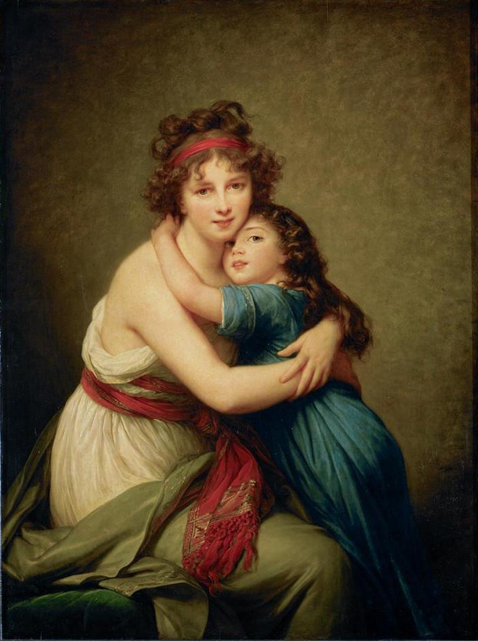
Vigee Le Brun and her Daughter, Julie by Vigee Le Brun, in the Louvre Museum, Paris.
Vigee Le Brun’s self-portraits with her daughter Julie are among her most beautiful and famous works, but the reality was far from picture perfect. The artist made the radical decision to raise Julie as a single mother, taking her into exile abroad. In Russia, Julie grew into a gorgeous but headstrong teenager who resented her mother’s suffocating love. Against her mother’s wishes, she fell in love with a brooding young secretary with few career prospects. When Julie started starving herself, her mother finally agreed to the marriage. After only two weeks, Julie grew disgusted with her new husband because she didn’t like the way he looked in his robe, and the marriage unravelled.
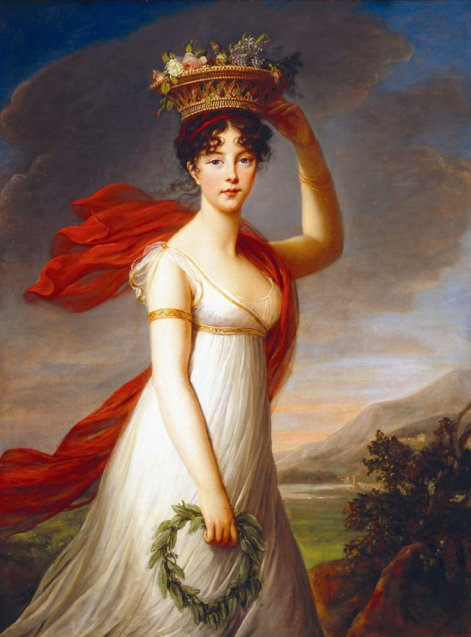
Julie Le Brun, painted by her mother at age 19, around the time of her marriage.
Years later in Paris, Vigee Le Brun offered Julie, now separated from her husband and impoverished, only minimal financial support because she had “a taste for bad company.” Julie was reduced to selling her own underwear as she lay dying at age 39. Vigee Le Brun’s enemies called her “a heartless mother.”
3. Original supermodel, stripper and porn star!
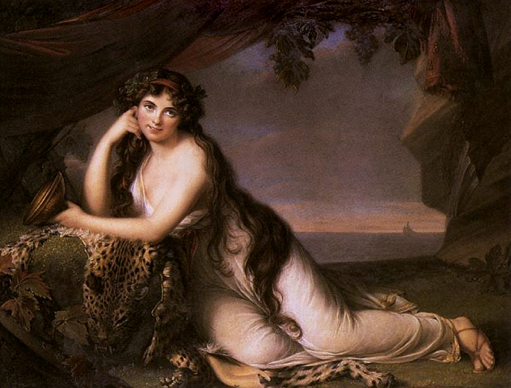
Lady Hamilton as Ariadne by Vigee Le Brun, private collection; reproduction by Henry Bone in the Wallace Collection, London.
Emma, Lady Hamilton was widely considered to be the most beautiful woman in the world, and Vigee Le Brun called her life “the stuff of novels.” Born guttersnipe Amy Lyon, she started out dancing naked on a tabletop at age 15. Emma’s lover Charles Greville sold her to his uncle Sir William Hamilton, Ambassador to Naples, who was 34 years her senior. While married to Sir William she embarked on a highly public affair with Admiral Nelson, Britain’s greatest national hero, presumably with her husband’s approval. This bizarre threesome was featured in wildly popular pornographic cartoons.
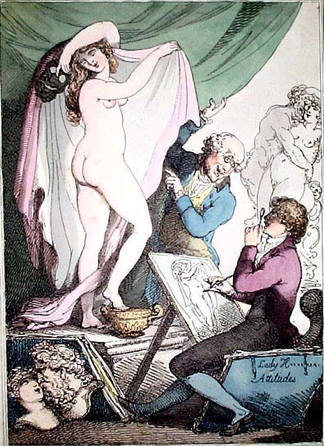
Erotic cartoon featuring a suspiciously enthusiastic artist sketching Emma while her husband shows off her naked body.
Her beauty attracted artists such as Sir Joshua Reynolds, Angelica Kauffmann and especially George Romney, whose paintings of Emma were reproduced and circulated throughout Europe, making her the Adriana Lima of her time. Vigee Le Brun appreciated her beauty and talent for striking poses, but found her vulgar, horribly dressed and artificial. After the tragic death of Nelson in the battle of Trafalgar, Emma died fat, drunk, penniless and alone. She was portrayed by Vivien Leigh in That Hamilton Woman (1940), said to be Winston Churchill’s favorite film.
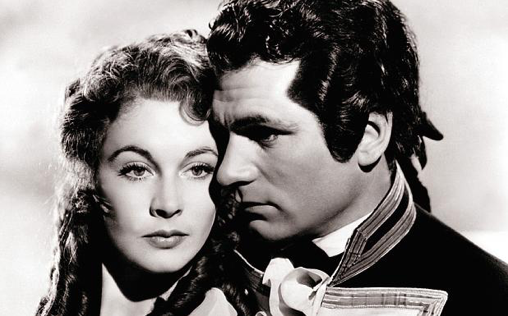
Real-life lovers Vivien Leigh and Laurence Olivier as Emma and Nelson in That Hamilton Woman.
4. Nazi poster girl, had the biggest balls in Prussia
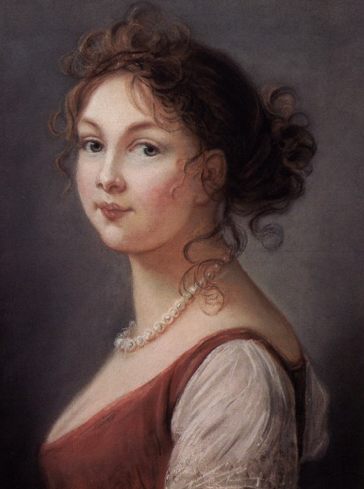
Queen Louise of Prussia by Vigee Le Brun, in the Schloss Charlottenburg, Berlin.
During the Napoleonic Wars, the French tried to spread rumors that Queen Louise of Prussia was cuckolding her husband, though she was renowned for her virtue. Despite his attempts to smear her reputation, Queen Louise met with Napoleon after Prussia was defeated and pleaded for more favorable terms of surrender. Napoleon was so impressed by her dignity and courage that he called her, “The only real man in Prussia.” Vigee Le Brun adored Louise, noting her beauty, kindness and graciousness that reminded her of her late patroness Marie Antoinette. During World War II, Hitler adopted Louise as an icon of Aryan womanhood. She was featured in a variety of Nazi propaganda, including the 1945 film Kolberg.
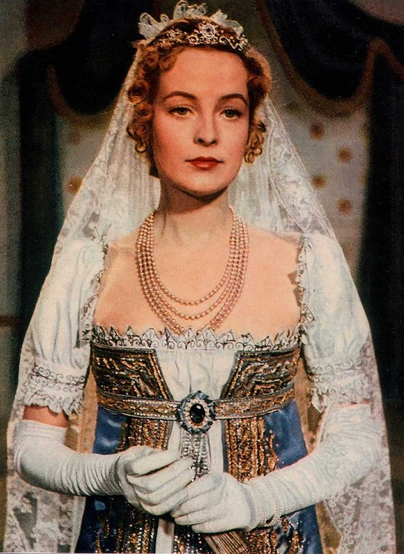
German Actress Irene von Meyendorff as Queen Louise in the Nazi Propaganda film, Kolberg. Louise faces off against Napoleon, in this case standing in for the Soviet Union.
5. French whore, daughter of a French whore, great-grandmother of the Queen
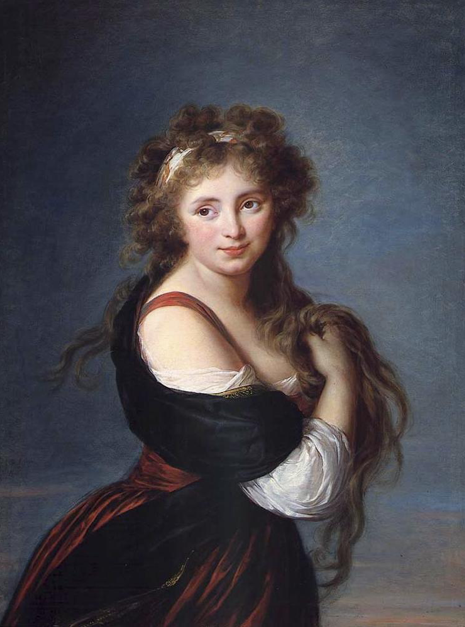
Portrait of Hyacinthe Gabrielle Roland by Vigee Le Brun, in the Legion of Honor, San Francisco.
Hyacinthe Gabrielle Roland was the bastard daughter of a French actress and an Irishman, who grew up to become a French actress herself and mistress of the Anglo-Irish Marquess of Wellesley. It was said that “no respectable woman could afford to be seen in Hyacinthe’s society.” Through one of Hyacinthe’s 5 bastard children she is Queen Elizabeth II’s great-great-great grandmother. So, the Queen is descended from a long line of bastards and French whores. Hyacinthe’s bastards were notoriously ugly, evil and scheming…not unlike the modern-day Royal family.

Sorry, not sorry.
6. Banged her own uncle
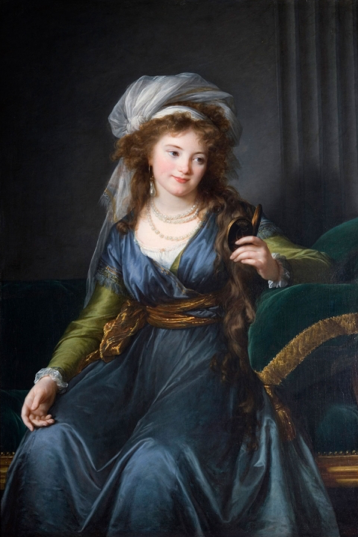
Portrait of Countess Skavronskaia by Vigee Le Brun, in the Jacquemart-Andre Museum, Institute of France.
Countess Skavronskaia and two of her five sisters all had sex with their own uncle, Grigory Potemkin, Catherine the Great’s lover and possible secret husband. Skavronskaia’s adoring husband and relatives lavished her with jewels and Paris gowns, which she waved aside indifferently, saying “Why bother?”. The Countess turned laziness into an art form, languishing all day on a divan, wrapped in black silks with no corest, and kept a slave under her bed to tell her stories until she fell asleep.
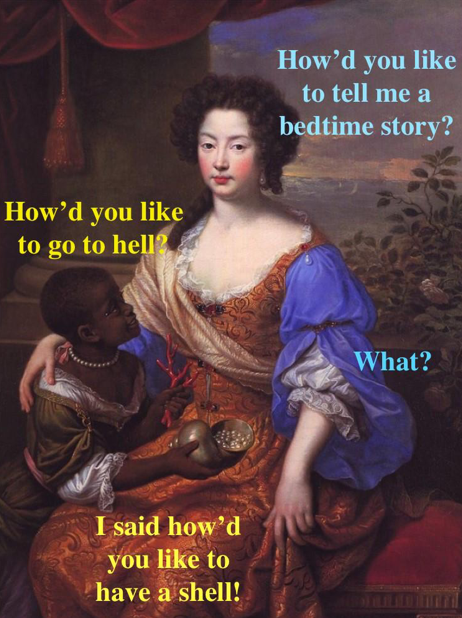
Portrait of Louise de Kerouaille by Pierre Mignard, in the National Portrait Gallery, London.
Despite her incestuous affair, slave abuse and supreme languor, Vigee Le Brun was delighted by the Countess’ sweet, angelic face.
7. Religious fanatic, niece of Catherine the Great’s sex tester
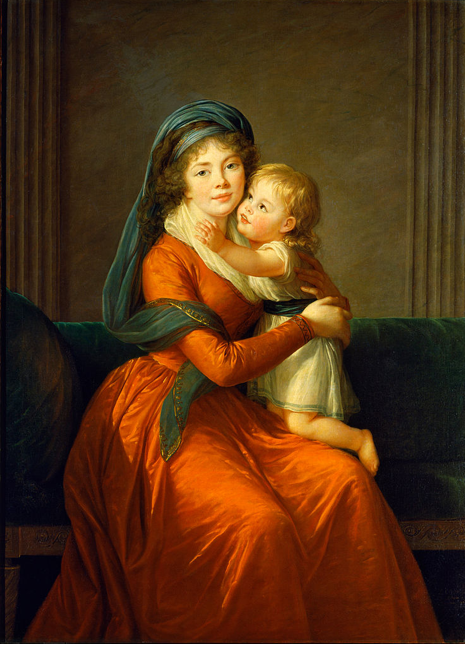
Portrait of Princess Alexandra Golitsyna with her son Piotr, in the Pushkin State Museum of Fine Arts, Moscow.
Princess Alexandra was raised by her aunt, Countess A. S. Protasova, legendary for her role as “l’eprouveuse” (love tester) of Catherine the Great. Protasova supposedly had sex with Catherine’s potential lovers to make sure they were disease free and up to the challenge of satisfying the Empress. Despite this lascivious background, Alexandra converted to Catholicism, and later converted her husband, three of her children, and several influential members of the Russian Court. This doesn’t seem so scandalous today, but considering Russia was strictly Eastern Orthodox at the time, it was pretty ballsy.
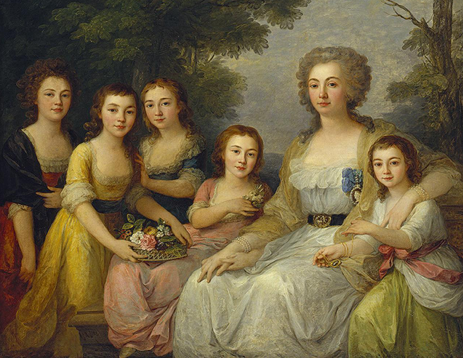
Portrait of Countess A. S. Protasova with Her Niece, by Angelica Kauffman, in the State Hermitage Museum, Saint Petersburg. Princess Alexandra appears on the left, as a young girl.
8. Introduced Indian food to France (it wasn’t a hit)
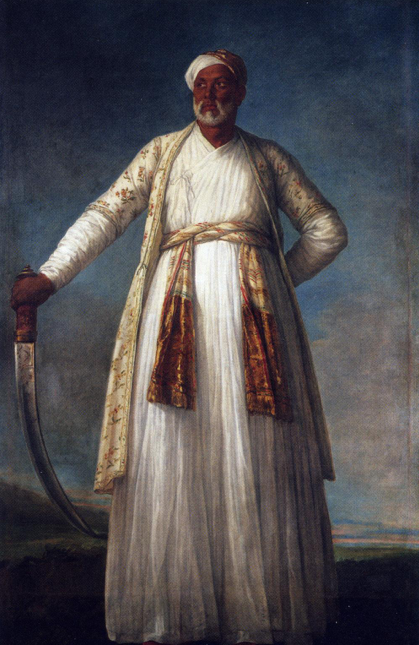
Portrait of Mohammad Dervish Khan, Private Collection. France.
Mohammad Dervish Khan came to France on a mission from India to form an alliance against the British. The Indian entourage of over thirty people held exotic entertainments such as hookah parties and Indian suppers. Marie Antoinette herself tasted their cuisine, but found the spice intolerable. Vigee Le Brun was even invited to a private dinner, at which she was obliged to sit on the floor, and eat curries served with bare hands instead of silverware. She said of the experience, “I’m sorry to say we had a miserable time.”
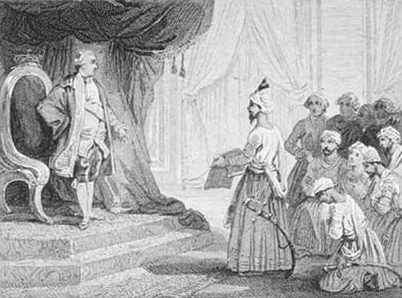
Louis XVI receives the Islamic Envoy.
Vigee Le Brun first spotted Dervish Khan and his father at the Opera and was impressed by their “copper complexions.” As a Muslim, Khan had a religious objection to being painted, but gave in for the sake of diplomacy. He hid the portrait behind his bed and refused to give it up, saying that “it needed a soul.” Vigee Le Brun later had it snuck out of his home, after which he tried to murder his valet for the betrayal. The Franco-Indian alliance was not successful, and according to rumor, Dervish Khan was executed when he returned.
9. Dumb Blond or Evil Genius?
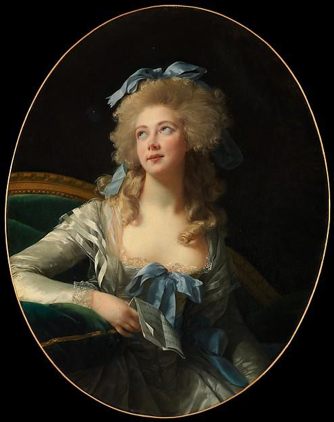
Madame Grand, in the Metropolitan Museum of Art, New York.
Catherine Grand was born in the steamy splendor of colonial India, where she married a British official when she was barely sixteen, and almost instantly started cheating on him with a middle-aged politician. She fled marriage and India to become a courtesan (high-class hooker) in the courts of England and France. She lived in sin with the Prince de Talleyrand, first Prime Minister of France, until Napoleon forced them to marry to avoid scandal. Marriage cooled their passion, and the newly styled Princesse de Talleyrand made off with an extravagant settlement that allowed her to live the rest of her life in luxury.
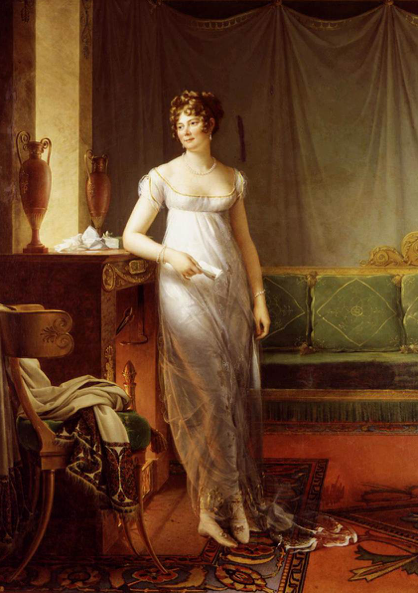
Catherine Grand, Princesse de Talleyrand later in life by Francois Gerard, enjoying the fruits of sleeping her way to the top. I ain’t sayin’ she a gold digger, but she ain’t messin’ with no…you know the rest.
Catherine Grand was famous for her air-headed but deceptively witty observations and antics, leaving historians to debate whether she was the Jessica Simpson of her time or a brilliant satirist in disguise. When asked where she was from, she always responded, “I am Indian,” In a French phrase which could be misinterpreted as “I am a turkey.” On one occasion, she was entertaining a famous French adventurer, and when asked to read a passage of his memoirs, she accidentally (?) read from the fictional novel Robinson Crusoe instead. We think Madame Grand wasn’t so dumb.
10. When Animals Attack!
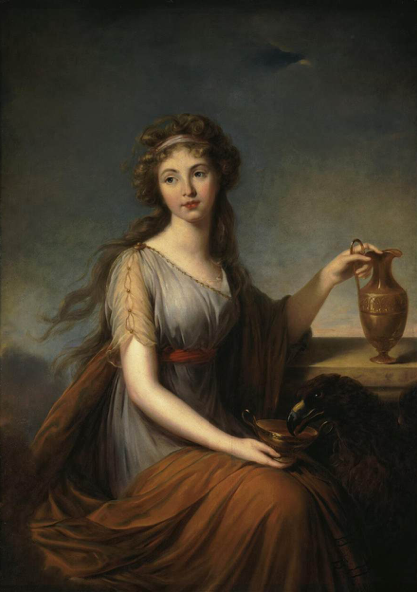
Portrait of Anna Pitt as Hebe, in the State Hermitage Museum.
Anna Pitt was the daughter of Thomas Pitt, 1st Baron Camelford, who some historians believe was a closeted homosexual. Vigee Le Brun described Anna as an extremely pretty girl of 16. Her future husband met her when he was a teenager and she was a baby (gross), and said she appeared to be “either dying or actually dead,” but she lived to be 92, thirty years longer than he did.
For this painting, a friend loaned Vigee Le Brun a live eagle (bottom right). The eagle was accustomed to being kept outside and became agitated indoors, fiercely snapping, trying to break free of its restraints and generally scaring the hell out of the artist. Donald Trump would have been wise to take note:

Don’t miss Vigee Le Brun: Woman Artist in Revolutionary France on view at the Met from February 15 through May 15, 2016. Be sure to bring your smart phone so Sartle can enrich your experience, and your smelling salts in case it’s too hot to handle.
By: Griff Stecyk









